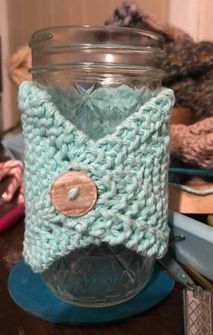 One thing they don't tell you when you start homesteading is how many mason jars you will need. Seriously. It is amazing how many jars I now own. I also was not aware of how many shapes and sizes jars come in. And did you know there are entire lines of products that can be used with your mason jars? Mason jar accessory lines. Yeah, me either. It wasn't until we had been homesteading for a few years that I realized just how extreme my collection had become. I know I sound fanatical and it looks like I am being paid to brag about mason jars, but I truly love them. (I would love to be sponsored by them since I've already spent a crap ton of money on them.) Reason #1 - Canning Sounds innocent enough. I am growing vegetables and fruit and want to preserve my harvest. I started with basic water bath canning jams and jellies. Harmless, right? Then the pickling happened and now I am pressure canning bone broth. I go through boxes and boxes of jars. My friends and family bring me their empties. I even give a fifty cent credit at the farm stand for each jar that is returned. They really are the ultimate in sustainable packaging. With a quick wash and sterilization, they can be reused countless times. Reason #2 - Fermenting Similar to canning, I found that fermented foods make our harvest last longer and provide us with great probiotic benefits. We make kraut, pickles, kefir, and a variety of vinegars. I use the MasonTops brand of Pickle Pipes. I make all of my ferments in the larger jars and then have to store them in smaller jars to keep them fresh longer. Maybe I should write another blog post on fermentation. Reason #3 - To-Go Cups You are about to see my crazy eco-side here. I hate disposable cups. Despise! When I found out my favorite size mason jar, the 24 ounce wide mouth fits in my cup holder, my life was changed for the better. I use both the Ball and EcoJarz lids with my metal straw for the perfect to-go cup. Really. It's amazing! Reason #4 - Coffee Cups Similar to the above reason, I like to carry hot tea or coffee with me when it's cold outside. I really love the Cuppow lid because it doesn't get as hot as the metal lids do. I also prefer the 12 ounce quilted jar. I love these so much I've learned to knit a coffee-coozie to protect my hands. These little jars are just perfect! Reason #5 - Goat Milking You read that right. I prefer using a glass half gallon jar for storage. I milk into a bucket but strain my fresh milk into mason jars to keep it super cold. Check out these awesome amber jars Ball just started offering. So cool! 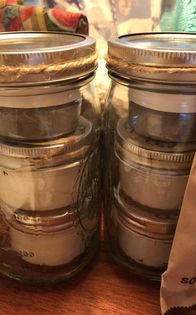 Reason #6 - Pretty Storage I love to keep my bathroom necessities in jars. I keep my nail clipping stuff together in one jar, Q-tips in another. I also keep my homemade deodorant and moisturizer in 4 ounce jars and sell our Healthy Hippie Starter pack in quart mason jar. Reason #7 - Left-overs I love using these wide mouth pint jars for storing left-over chili and soup. It is designed not to leak in my bag and heats up easily (after removing the metal ring and lid, of course.) Straight-sided jars can be used for freezing left-overs, too. Only use straight sides for freezing. The jars with shoulders will crack or explode when frozen. I speak from experience. Learn your lesson from my mistake. Reason #8 - Seed Starting and Window Sill Gardening Mason jars make a great place to start seeds. The clear sides help warm the seeds in a sunny window. If you plant the seeds on the sides, you can actually watch your seed sprout and grow. You can also plant herbs in mason jars to keep them handy in the kitchen. The one thing you need to monitor is the water in each jar. Since there are no drainage holes, you have to be a little more observant. You can add rocks or packing peanuts to the bottom of the jar before adding your soil to help this issue. Reason #9 - Makeshift Lighting In a pinch, you can place candles in mason jars for gorgeous mood lighting or emergency lighting in case of a power outage. I like hanging them outside on branches for a rustic lighting opportunity. If you are worried about little ones being too curious, you could use LED tealights for a safer option. Reason #10 - Glassware I would not be a true Southerner if I didn't mention that mason jars make great drinking glasses. This is especially true if you have teenagers or forgetful adults in your house that leave glasses everywhere! You won't get nearly as upset about someone breaking or losing a mason jar as you do your good wine glasses. We have been lucky enough in all our scrounging to have located some jars with handles. I'm pretty sure they sold jelly or something in them since mine don't have a brand name on them. You can buy similar ones here. Did I forget something? Please let me know how you use your mason jars. I'm sure there are a hundred or more other uses for my favorite homestead accessory. 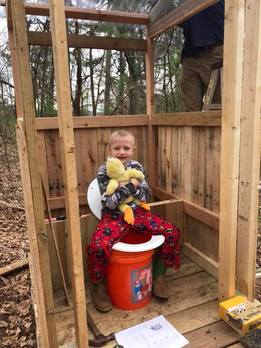 Yes, you read that correctly. We have almost completed the newest addition to the homestead, our new outhouse. I'm sure your next question is why do we need an outhouse. A few weeks ago I shared with you that we will be opening the homestead to the public for the Statham Homestead Trail in April. When you invite people over, you have to have somewhere for them freshen up, if you know what I mean. We have also wanted one for us to use when we are out there working and all muddy. Nothing makes me more insane than for my children to run through the house with their dirty shoes on. The outhouse is a logical solution to both problems. I'm sure this leads to more quandaries. No, we did not dig a big hole in the ground. You actually have to get a permit if you are digging for an outhouse to make sure you are not near a drinking source. We are using a composting toilet mode from the bucket and toilet seat you see Brother sitting on. We will add wood mulch to the bucket as we use it and empty it into a larger barrel to finish decomposing. When it all broken down, it will be used to fertilize our non-edible plants on the farm. Before you get all grossed out, I will remind you that the majority of my readers use municipal water sources that takes sewage and restores it to potable water in a facility which really is the ultimate in poo recycling. We are trying to be as sustainable as possible. We salvaged the wood wood and pallet boards from other projects, rinsed out one of the many buckets we have on the farm, and only purchased the roofing, screws, and a toilet seat. Pretty impressive, right? Make plans to come for a visit soon and sit a spell.
Before I was a homesteader, I was a crafter. I've already shared that I love to create things. I always have. Vasek had been taking the beekeeping course for a while when I finally decided to see what other classes were being taught at Lazy B Farm. The soap making class caught my interest and I signed up. I had no idea what to expect. I had only seen the melt and pour soaps at the craft store. I was in for a shock!
I was not prepared for the amount of chemistry required to make soap. Nerd alert! Saponification, or the process that happens to turn fat into soap, was completely overwhelming. The class introduced me to hot and cold process soap making. I will not bore you with all the details and differences between the two. I was immediately drawn to the hot process method, mainly because it was less temperature monitoring and I could use the soap quicker after processing. Amanda, from Amanda's Farm to Fork, was the hot process instructor. She is very laid back and hysterical! I learned so much and wrote as much down as I could manage. I thought to myself, "if she makes that many soaps in a week, it must be easy." Famous last words. The process itself is technically not difficult. The myriad of ways it can go wrong, however, are positively overwhelming. I ordered my ph-test strips online, found a used crock pot at a thrift shop, and got some oil to use. Most soap makers will not share their recipes since they are from years, sometimes decades, of trial and error. Here I was with random oils, gloves, safety goggles, and a soap calculator. It was like a scene from Fight Club. I made mistake after mistake until I finally had something that resembled soap. But I was smitten. I loved taking ingredients that are usually found in kitchens and turning them into luscious, fragrant soap. Since that first batch of soap, I have produced hundreds and hundreds of bars of soap. I have tried everything from olive oil to lard. I know what essential oils make the best fragrances. I am proud of the soaps I make and have loyal customers that return again and again. This is all because some crazy soap ladies were willing to share that knowledge with me. I will forever be grateful. One of the first questions I get when people hear we have a homestead is: what is a homestead? That question is not so easy to define. Each homestead looks different to match the needs of the family it supports. If you think back to 150 years ago, a home had multiple purposes. Cars had not been invented yet. Stores were miles away. If you wanted something, you had two options: make it or do without. Fast forward to now. We have stores on every corner, multiple cars in every garage, and more options than we can research. The irony is that many of us are living with too much. Too much food, too much weight, and too much stress. Enter homesteading into our lives. We are striving to lead a purposeful life filled with experiences, not stuff. Below you will find our top ten reasons we homestead. 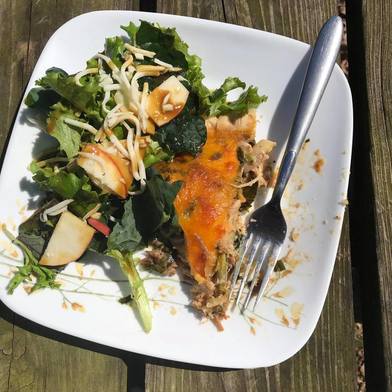 #1 - More family time. As our four kids are growing up faster than we thought imaginable, Vasek and I saw how little time we were actually spending together. With my 40 hour work weeks and his completely unpredictable construction work schedule, we kept seeing our family time slipping away. We made up our minds that time was the most valuable thing we have and that we had to be in control of it or it would slip away. Much like a budget is where you tell your money where to go, we needed to "rebudget" our time. We paid off debt and eliminated expense to the point that my paycheck would cover all of our expenses. Then the exciting work began. #2 - We are what we eat. Ask any physician about health and they will tell you that what you put in your mouth shapes your body and energy level. When you eat highly processed foods, which I did for far too long, you body slows down and accommodates what you put in it. This means that you will use all those empty calories as fat. You will be nutrient deficient. You just plain won't feel good. I think about all the time I wasted feeling lazy and sluggish because I was not feeding my body nutrient rich foods. Eating a mostly plant based diet is the key to a healthy lifestyle. And growing your vegetables ensures they are the healthiest produce you can eat. #3 - Animals should be treated with kindness. Many people openly gasp when I say we raise meat chickens and rabbits. They question how I (or my husband) could possibly kill animals we love. And the hard truth is this...in order for us to feel ok with eating animals, we have to know they lived the best life possible. If you visit our homestead, you will see how much we love our animals. We bring them fresh produce, hay, or kudzu daily. We play with them. We cuddle with them. We have seen the documentaries about animal treatment in the U.S. and cannot support that type of "factory farming." We had three options, go vegetarian (not really an option for my family's food taste), buy only animals we know are sustainably raised (very expensive for a family of six), or grow them ourselves. Is it hard to butcher an animal we birthed on our farm? Yes. It would be harder to justify supporting a food industry that does not acknowledge the sacrifices the animals make for our diets. This is our choice to live out our values. It's not always easy but it is always worth it. |
Vasek and BrookeWe are thrilled to share our homesteading successes and struggles with you. There's a steep learning curve here and we are ready for the challenges. Archives
April 2019
Categories |
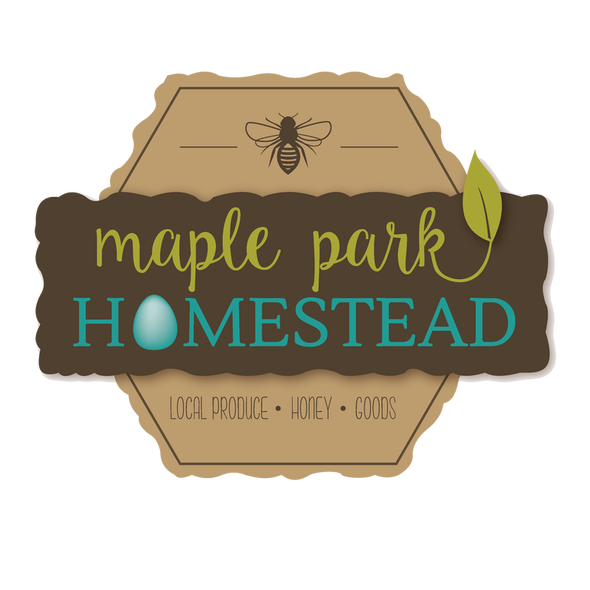
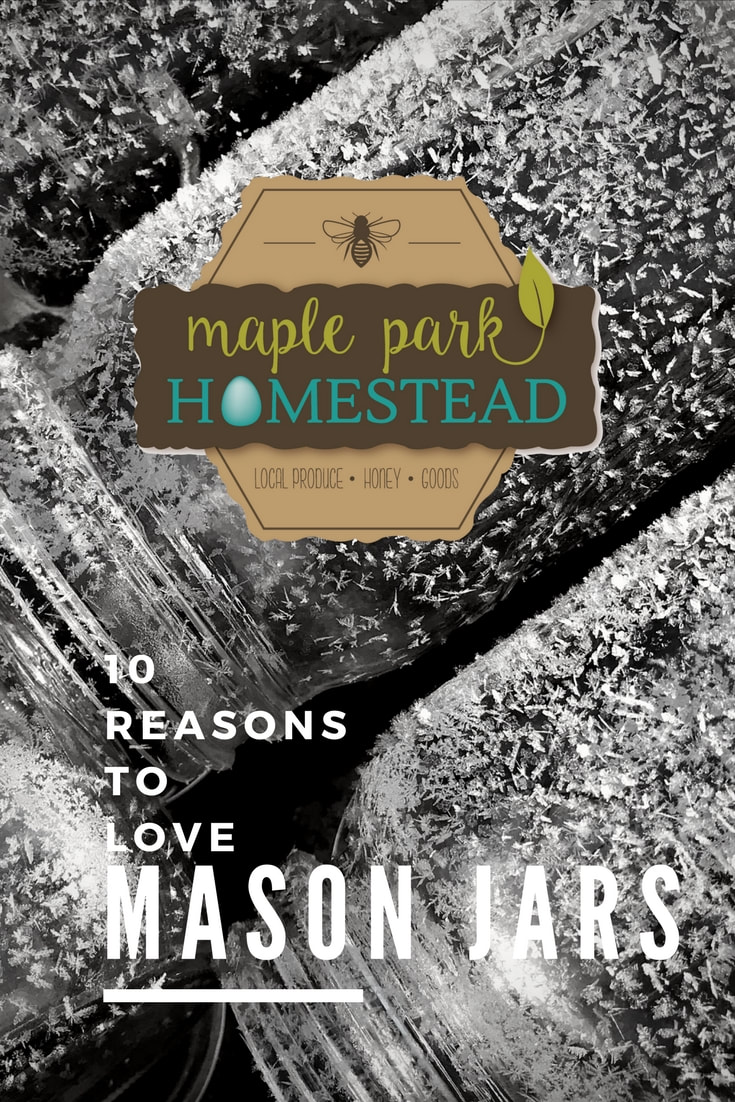
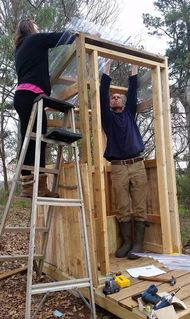
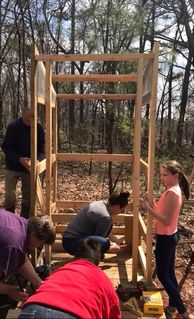
 RSS Feed
RSS Feed
